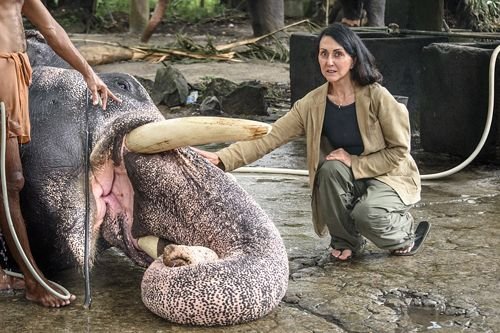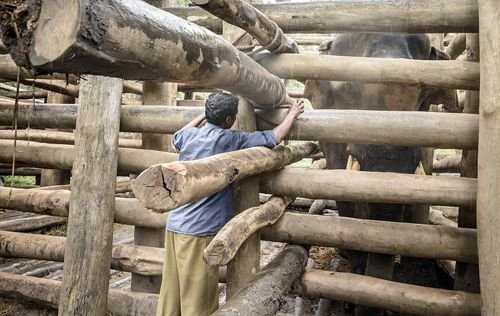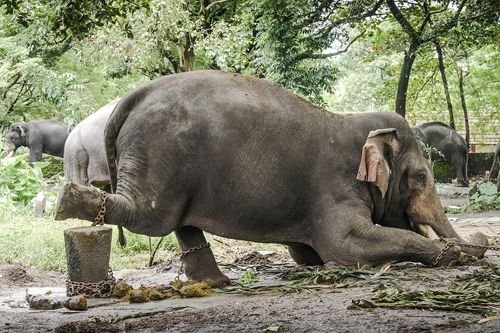
The tragic life of elephants working in tourism
`I couldn’t believe that in front of my eyes were living animals. They looked like motionless statues or stuffed animals in a museum,` said Liz Jones, a tourist and activist.
Liz Jone took a photo with an elephant in a training area in India.
A male elephant named Nandan, 43 years old, struggled to find a way to escape the chains that were tying his hind legs to the tree.
Not only Nandan, other elephants also suffer similar suffering when being tamed by mahouts at temples using inhumane methods.

Elephants are kept in cramped cages and chained for their entire lives, buried in one place for months.
Professor Nameer – head of the Kerala Wildlife Research Center, India, said he has repeatedly asked mahouts to be responsible for letting the elephants free for one hour every day.
Their travel time each year is from October to May. An elephant will participate in about 100 – 150 commemorative festivals.
People often blindfold elephants while they move.

For most of their lives, chained elephants have to stand still.
Their main food is dry palm.
Today, these elephants are under the management of large businesses in India.
Sreedhar Vijayakrishnan, an expert on elephant research, said the cruel treatment of elephants only took place about 50 years ago.


